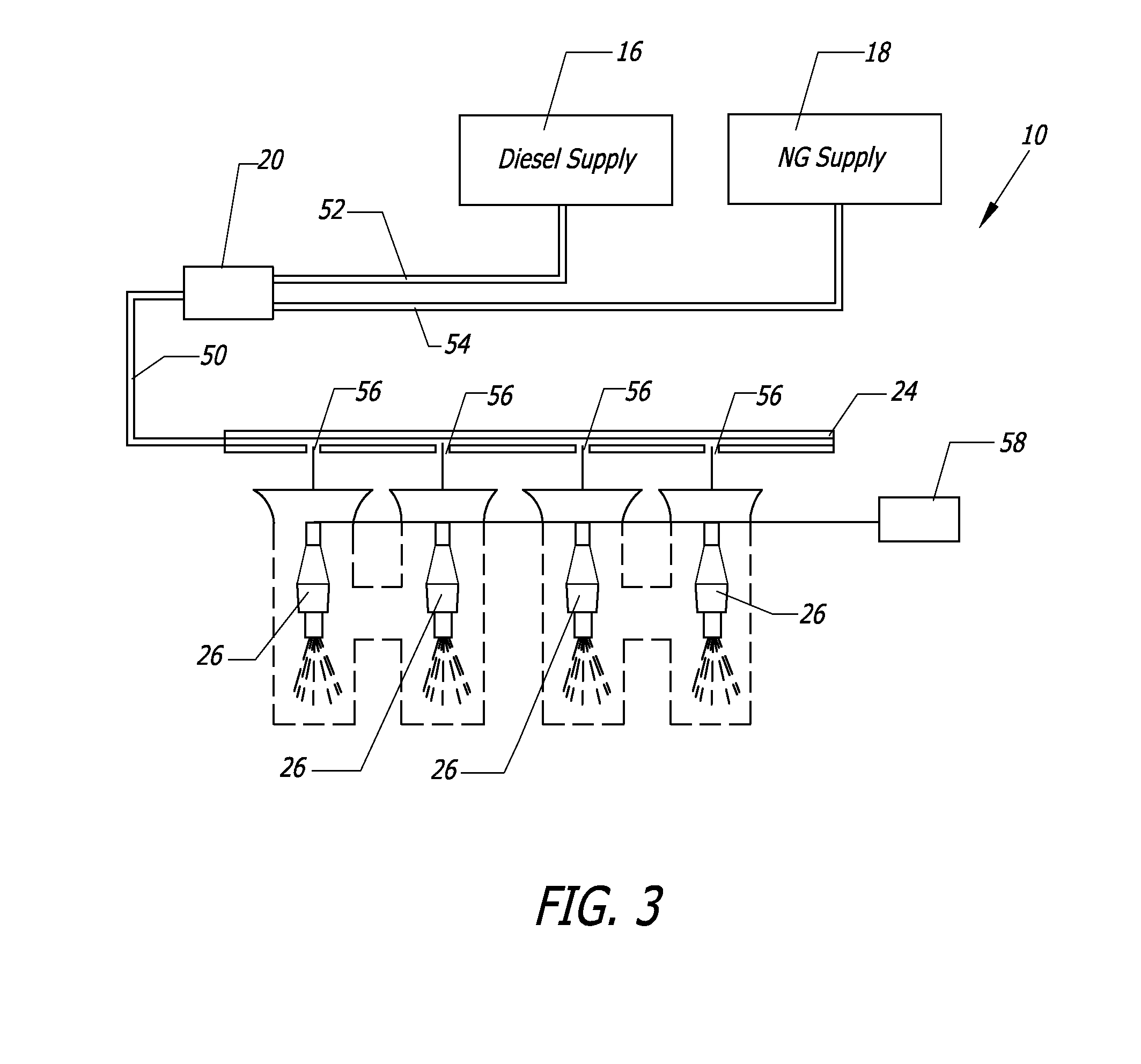Multi-fuel system for internal combustion engines
a fuel system and internal combustion engine technology, applied in the direction of liquid fuel feeders, machines/engines, electric control, etc., can solve the problems of reducing the service life of the engine,
- Summary
- Abstract
- Description
- Claims
- Application Information
AI Technical Summary
Benefits of technology
Problems solved by technology
Method used
Image
Examples
Embodiment Construction
[0032]As shown in the accompanying drawings, for purposes of illustration, the present invention resides in a dual diesel and natural gas system for a diesel combustion engine. In accordance with an embodiment of the present invention, a diesel engine system is converted into a multiple fuel engine which operates on a combination of diesel fuel and natural gas fuel. In a preferred embodiment, the multiple fuel system operates on diesel as a first fuel and natural gas as a second fuel, being combined with diesel to lessen emissions. The system of the present invention can also potentially cause a dramatic increase in engine efficiency, such that the user can keep his car fueled for much less than it would cost to fuel a standard diesel engine.
[0033]In accordance with the invention, existing diesel engines can be retrofitted with as little modification to the standard diesel engine as possible. For example, the only additions required to the standard diesel engine would be a tank for ...
PUM
 Login to View More
Login to View More Abstract
Description
Claims
Application Information
 Login to View More
Login to View More - Generate Ideas
- Intellectual Property
- Life Sciences
- Materials
- Tech Scout
- Unparalleled Data Quality
- Higher Quality Content
- 60% Fewer Hallucinations
Browse by: Latest US Patents, China's latest patents, Technical Efficacy Thesaurus, Application Domain, Technology Topic, Popular Technical Reports.
© 2025 PatSnap. All rights reserved.Legal|Privacy policy|Modern Slavery Act Transparency Statement|Sitemap|About US| Contact US: help@patsnap.com



